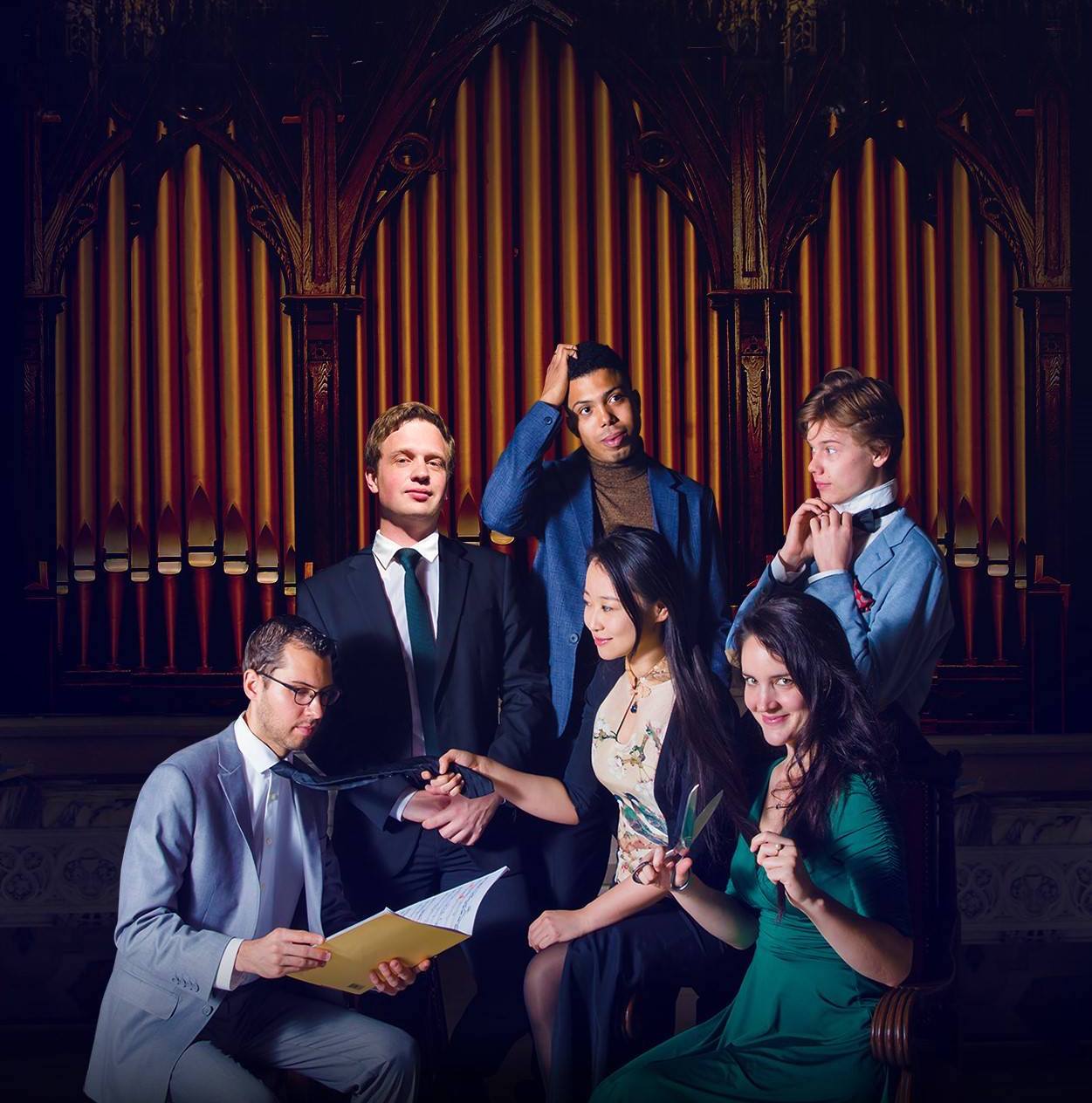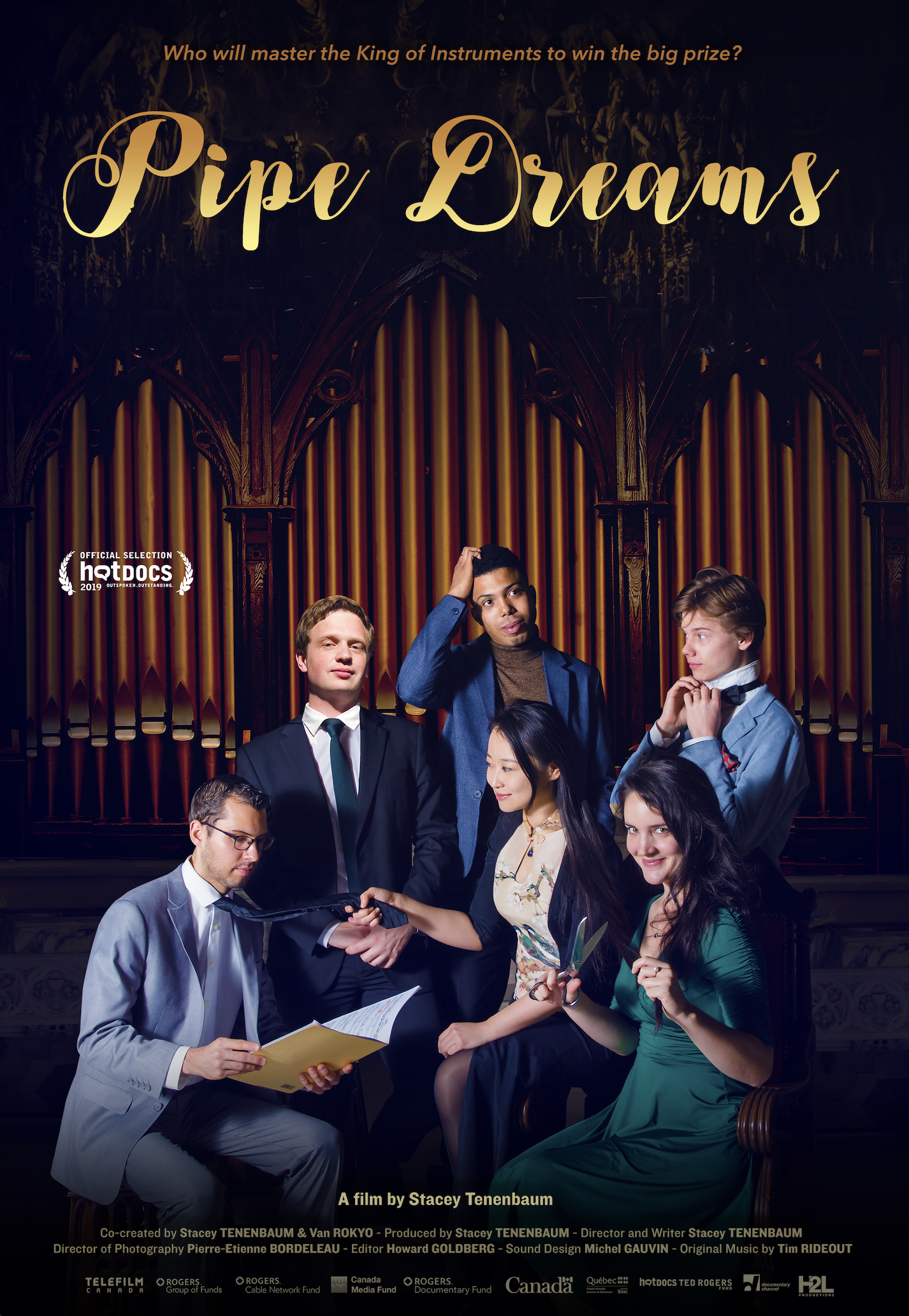


June 21, 2020 | Special Edition
STACEY TENENBAUM
–––––––––––––––––––––––––––
The Film Pipe Dreams and New Perspectives on Publicizing the Organ

June 21, 2020 | Special Edition
STACEY TENENBAUM
–––––––––––––––––––––––––––
The Film Pipe Dreams and New Perspectives on Publicizing the Organ

Introduction from the Editor
Stacey Tenenbaum is the award-winning film producer and director of the new documentary Pipe Dreams, which premieres on PBS in the USA on June 22 at 10:00 P.M. EST. The film follows four competitors in the Canadian International Organ Competition and has so far been an incredibly well-received introduction to the pipe organ among critics and mainstream audiences alike. In this interview with Vox Humana Associate Editor Nicholas Capozzoli, Stacey talks about her journey filming the organ with no preconceived notions, and shares her perspectives how organists might make the instrument known to wider audiences. To begin, here is the trailer of the film:
––––––––––––––––––––––––
Stacey, thank you for agreeing to this interview. We are eager to hear about your unique perspective on organ music as a film producer. What made you want to make a documentary about pipe organs and organists?
I actually didn't know anything about the organ until I attended the first Canadian International Organ Competition in 2008. I am Jewish, so I didn't have any early exposure to the instrument in church. In a way I think that was a good thing since I didn't have any preconceived ideas about the organ or organ music. I fell completely in love with the instrument when I saw it being played at that first CIOC. For somebody who doesn't play any instruments it is really mind-boggling to watch! I couldn't help but wonder how anybody could learn how to play such a complex instrument, especially since it usually can't be practiced at home like piano or violin. I was also struck by the age of the musicians — they were so young. I was curious and wanted to find out more about why somebody that age would become an organist. The music itself was a revelation to me; I loved the power of the instrument and the feeling you get when you are listening to it live. It was also new for me to listen to music and to be able to feel the sound in a very physical way. I don't think you get that feeling with other instruments (or at least I don't).
The strange thing is I never thought about doing a documentary film about the competition. It was a cameraman I was working with on another film who came up with the idea. We were having drinks after a shoot when he said out of the blue that he'd like to make a film about the CIOC. I was pretty shocked as I had never talked to him about the competition or my love of the organ. When I got home from that trip, I contacted a friend at the CIOC to discuss the possibility of making this film. They were so receptive to the idea right from the start and did everything they could to introduce me to organists and to help set up the filming. It's a filmmaker's dream to have such access! Part of my pitch to the CIOC was that I wanted to make this film in order to bring organ music to people like me without a background in music. I wanted the audience for this film to discover and fall in love with the organ just like I did the first time I saw it being played.
As a filmmaker, what are some of the surprises and challenges of making a high-quality film about our art form?
The biggest surprise for me was how much modern music is being composed for the organ. When I started the film, I was very ignorant about the repertoire and just assumed that all of the music would be historic and therefore free to use. Boy was I wrong! I ended up having to pay for a lot more music than I had originally budgeted. This was a bad thing for me as a film producer but a good thing for me personally to be able to discover the amazing repertoire of modern organ music.
The other thing I was worried about was editing the music, as I am not a musician, nor is my editor. It was very important to me that the music be cut in the right places so it wouldn't be cringeworthy for musicians who know these pieces intimately to listen to. Before I released the film I had quite a few organists watch it to make sure that the music editing was done well. I am always thrilled when musicians tell me how well the music is edited after they see the film!
Another challenge for me was recording of the music, especially how I could give the audience that feeling of being in a church. Before I started filming I met with a few sound engineers to figure out the best way to record organ music. We ended up using an ambisonic microphone (in addition to the regular microphones we use) to record the sound in 3D. I felt that was the best way to give the feeling of the room to viewers. I was super happy with how it turned out! The other decision we had to make was when to use the sound of the clicking of the keys and pedals you hear when you are close to an organ being played. I tried to stay true to that; so when we see the organ played up close I would keep those mechanical sounds in the film. I know they aren't necessarily "musical," but I think they help viewers feel like they are there with the musicians playing. They remind viewers that the organ is a complex mechanical thing.
One of my favorite parts of making Pipe Dreams was being able to film inside the organ at the Symphony Hall here in Montreal (actually, that might be one of the favorite things I have done in my entire film career!). We were alone in the hall and able to film inside the organ as Jean-Willy Kunz improvised. It was a tough gig for him since we would tell him to only play a specific keyboard as we filmed each part. It was a very special experience — some of the music was so incredibly beautiful that it left me breathless. I was really happy to be able to include these images and Jean-Willy's improvisations in the film. I think it is really cool for viewers to see "inside the beast."
A film about an organ competition is probably not going to be a number one blockbuster among the general public. After the film was finished, did you face any challenges in pitching the film to various festivals and companies? What do you think organists can learn from these realities?
Actually, I was surprised how well-received the film was! My last film was about shoeshiners, which was a harder sell than organs for some reason. I think part of what helped is that this is a competition film, so funders and festival programmers understand the concept. My "elevator pitch" was that the film would be like Spellbound [a documentary about a spelling bee] but with good music. It worked! The film has been incredibly successful — it premiered to packed audiences at Hot Docs, which is one of the world's top documentary film festivals and it was released in theaters across Canada and the USA and on streaming platforms like Amazon Prime and iTunes. The film is also getting a lot of attention on television. It was broadcast across Canada on the Documentary Channel and CBC, in Japan on NHK, and now in the USA on Independent Lens, which is the premiere strand for documentaries on PBS. I also just found out that the film will be airing in Sweden on SVT! This all goes to show that there is major interest in organ music internationally.
The exciting thing about documentaries is that they bring you into worlds you might not otherwise see, and documentary viewers are often very open to that. Maybe the fact that the organ is an instrument "shrouded in mystery" is actually a good thing in terms of attracting new audiences? I think that once people see the organ being played, they are instantly hooked. So perhaps organists can take that idea and work to find more ways to have the instrument seen by audiences. The CIOC does a great job on this with their live projections during the competition, and I am sure there are other creative ways to give organists more of a spotlight. Hopefully my film helped a little bit with that, but there is still work to be done to attract new audiences.
Organists have a very different repertoire and career compared to other orchestral musicians. Our insular environment often makes it difficult for us to reach a wider audience like that of a symphony orchestra. As a non-organist who has spent a lot of time with this art, do you have any ideas about how we can “think outside the box?”
Like I said earlier, I think you need to start thinking of more ways to have audiences see the instrument being played; that might be live projections, or more organs being played in the front of churches rather than from organ lofts, or even the electronic organ. I know that there is some controversy about the electronic organ among players, and I understand why that is, but I really do believe it can be a tool to bring new audiences to organ music. Give them a taste with an electronic organ concert in a public space and they may want to go into a church to hear the real thing being played. There is also the idea of playing more modern or popular repertoire on the organ. You can suck people in with a piece they know and then lay some Messiaen on them once they're hooked. That's exactly what I did in the film — the documentary starts with a transcription of Ride of the Valkyries and moves on from there. Once I had them hooked, viewers became more receptive to all kinds of other repertoire. I can't tell you how many people say they didn't like organ music before watching the film but that once they saw it their minds were completely changed. I also think there is a lot that can be done in terms of educating the public about the instrument itself. It is such a cool, hand-crafted machine, and I feel there is a lot of popular appeal in that. Bring people inside your organs, talk about how they work, show how they are tuned. All of these things are unknown to a general audience and they are super interesting! Finally, invite the public to come and play. I had the chance to play on a few organs while filming and that was an absolute thrill! I can't play actual pieces, but I still had a lot of fun just pulling stops and making sounds. Let people come and experiment with sound. It will be something they will never forget.
You have all of this at your fingertips just waiting for people to discover.
––––––––––––––––––––––––
More information about Pipe Dreams can be found on both the film's official website and on PBS. The film will be broadcast on the latter on June 22 at 10:00 P.M. EST. The film can also be rented or purchased from the iTunes Store, Amazon, and Google Play.
––––––––––––––––––––––––
The views and opinions expressed in this article are those of the author, and do not necessarily reflect the position of Vox Humana.